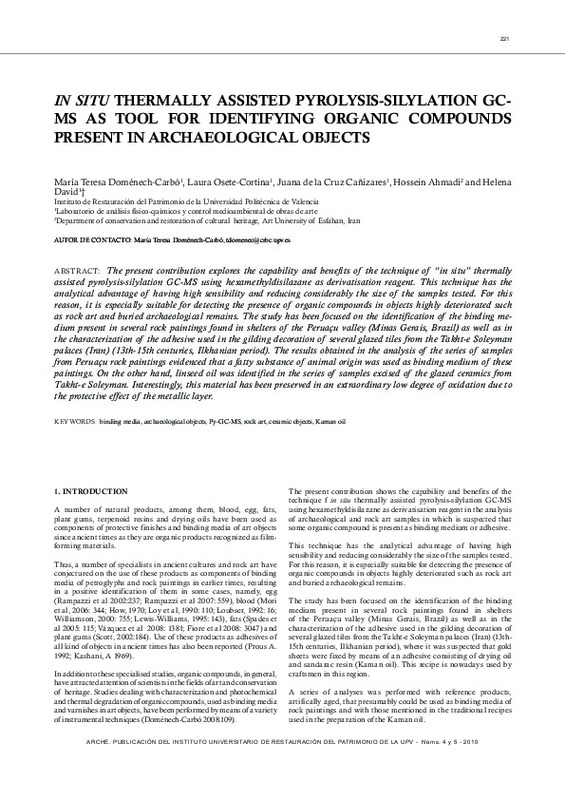JavaScript is disabled for your browser. Some features of this site may not work without it.
Buscar en RiuNet
Listar
Mi cuenta
Estadísticas
Ayuda RiuNet
Admin. UPV
In situ thermally assisted pyrolysis-siIylation GCMS as tool for identifying organic compounds present in archaeological objects
Mostrar el registro completo del ítem
Domenech Carbo, MT.; Osete Cortina, L.; De La Cruz Cañizares, J.; Ahmadi, H.; David, H. (2010). In situ thermally assisted pyrolysis-siIylation GCMS as tool for identifying organic compounds present in archaeological objects. Arché. (4-5):221-226. http://hdl.handle.net/10251/31075
Por favor, use este identificador para citar o enlazar este ítem: http://hdl.handle.net/10251/31075
Ficheros en el ítem
Metadatos del ítem
| Título: | In situ thermally assisted pyrolysis-siIylation GCMS as tool for identifying organic compounds present in archaeological objects | |
| Otro titulo: |
|
|
| Autor: | De la Cruz Cañizares, Juana Ahmadi, Hossein David, Helena | |
| Entidad UPV: |
|
|
| Fecha difusión: |
|
|
| Resumen: |
The present contribution explores the capability and benefits of the technique of ¿in situ¿ thermally assisted pyrolysis-silylation GC-MS using hexamethyldisilazane as derivatisation reagent. This technique has the analytical ...[+]
El presente trabajo explora la capacidad y ventajas que aporta la Pirólisis-sililación GC-MS empleando HMDS como reactivo derivatizante. Esta técnica presenta la ventaja de su elevada sensibilidad y la considerable reducción ...[+]
|
|
| Palabras clave: |
|
|
| Derechos de uso: | Reserva de todos los derechos | |
| Fuente: |
|
|
| Editorial: |
|
|
| Tipo: |
|







